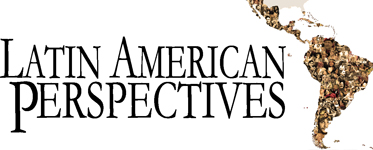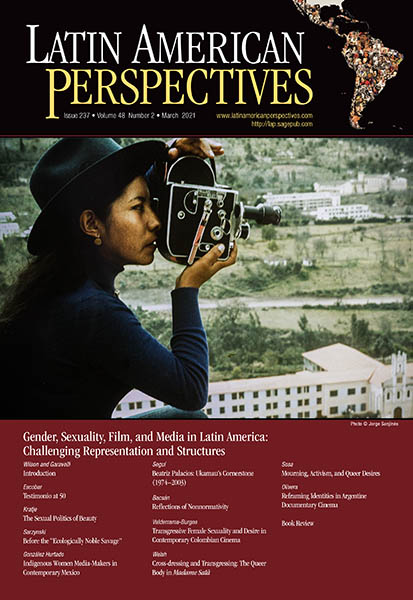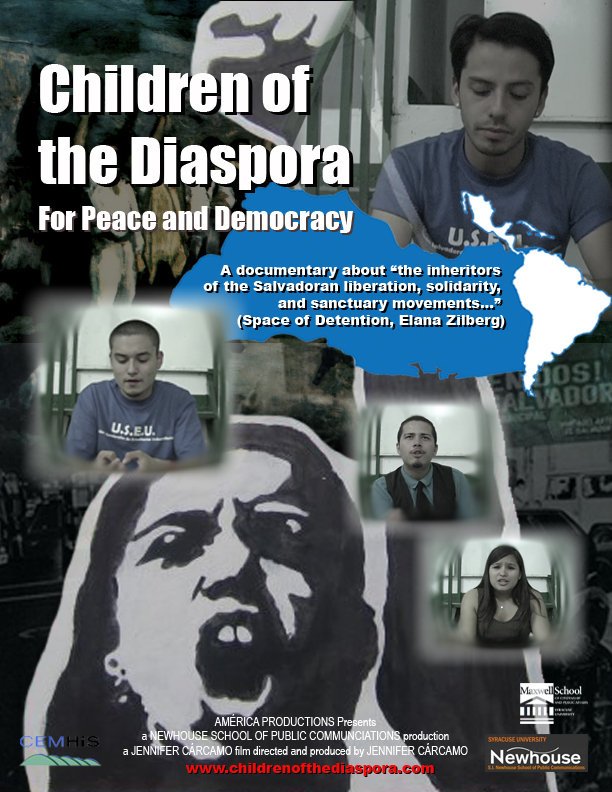Pedagogical Documentaries and Praxis
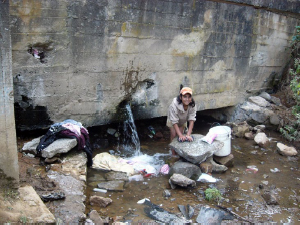 By: Kristi M. Wilson and Tomás Crowder-Taraborrelli
By: Kristi M. Wilson and Tomás Crowder-Taraborrelli
Alejandro Ramírez Anderson Tierralismo: Stories from a Cooperative Farm, 2013. José Cohen H2Omx, 2013.
En este valle verdusco, antes corrían ríos rutilantes, cenizos, castaños y cárdenos, púrpuras, perdidos y pardos; quebrajosos, vocingleros, berreando bajaban de la mon-taña humeante, salían a los llanos lerdos, tentaban a la temprana Tenochtitlán. Hoy van mugiendo entubados, menguados, pesados de aguas negras, crecidos de mierda; ríos sin riberas, risibles, con riendas, rabiosos, rabones, ruidosos de coches; avanzando a tumbos por la ciudad desflorada, desembocando en los lagos letales, y en el marcado mar, que ya no los ama.
—Homero Aridjis
Part of the rich documentary film tradition includes pedagogical films. The best of these documentaries successfully incorporate the strange combination of artistic and pedagogical innovation in their efforts to educate and encourage audiences to bring about social change. In the past decade, a new type of documentary about sustainability has made itself a prominent feature of sites like YouTube, Vimeo, and Facebook. These documentaries vary in quality and length, from feature-length films about activists who oppose the depletion of natural resources to instructional videos about how to build an adobe house. Two recent pedagogical documentaries distributed by Icarus Films that stand out from the crowd include José Cohen’s 2013 H2Omx (Mexico) and Alejandro Ramírez Anderson’s 2013 Tierralismo: Stories from a Cooperative Farm (Cuba).
To say that global warming and climate change have resulted in great crises in the world is an understatement. Latin American activists have mobilized against deforesta-tion and mountaintop removal among other forms of environmental degradation. In two of the largest cities on the continent, São Paolo and Mexico City, residents have rallied to protest water shortages. As its title suggests, H2Omx is a documentary about the water problem in Mexico City. The film delicately maps the traffic of water into the city and, more important, offers an efficient and practical method of combating the effects of urban growth and climate change—flooding and drought. Tierralismo profiles the Alamar, a world-renowned organic cooperative farm in Cuba whose members pro-pose that their practices of small-scale farming could provide a model for sustainable agriculture in their country and the rest of the world.

Figure 1. Girl washing clothes in contaminated waters, from H2Om
H2Omx begins with an establishing shot of drops of water falling upon a large lake surrounded by mountains. Aerial shots of the city, like the opening of an apocalyptic blockbuster, eerily chart a terrain under threat. One of the interviewees reminds us that Mexico City “was founded in the water” but that the urban model of development ushered in by Spanish colonizers transformed the city and its suburbs into a dry met-ropolitan region.
Cohen, with the help of the producer Lorenzo Hagerman, is aware of his duty to educate, and therefore he establishes early on that potable water is one of the key ele-ments in the economy of the city. Arnold Ricalde, an environmental assessor, states that 20 years ago this precious resource had to be imported from rivers outside the city, underscoring the dependency of this megalopolis on other regions’ water supplies. The sequences that detail the hard work of a truck driver to supply residents of new settle-ments with water are evidence of the looming crisis. The driver complains of thieves who want to seize his precious cargo. Higher-income sectors of the population also suffer from lack of water. The owner of a gourmet restaurant describes how difficult it was to keep his business open for four days without water.
Panoramic shots delineate the regional route by which water is imported. Aerial shots of treatment plants make them appear like giant avant-garde sculptures. Accompanied by a haunting soundtrack by Javier Álvarez, the labyrinthine viaducts make for visually stunning patterns. The underprivileged fish for water of dubious quality with cans on ropes. Some have to trek to supply centers and use donkeys or wheelbarrows to transport the precious resource back to their homes or small busi-nesses. These sequences depict an underdeveloped and crippling infrastructure despite the millions of pesos invested each year in water purification plants (Figure 1). The most stunning and disheartening footage comes from the rivers and viaducts carrying vast amounts of chemical foam. Large clumps of foam fly into the air like doves and land on the fields, polluting crops with heavy metals. The water used for farming contains so much fecal matter that farmers are able to increase productivity without having to rely on manure or fertilizers. Cohen’s contribution to the exposure of this dire situation is to feature the grassroots efforts of the industrial designer Enrique Lomnitz and the engineer David Vargas Vogel from the civic association Isla Urbana. Lomnitz and Vargas demonstrate a practical response to the impending cri-sis. In a somewhat straightforward operation, they are training local communities to collect thousands of liters of rainwater a year with a few tubes and plastic barrels. H2Omx shows that the installation of this water-collecting system is not complex and that with the help of a bricklayer people can build similar systems in their own com-munities and begin the gradual ascent toward sustainability.
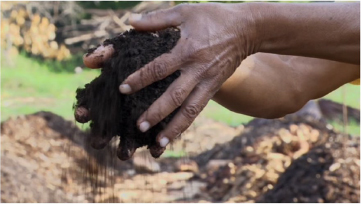
Figure 2. Nurturing the soil of the Alamar cooperative, from Tierralismo (courtesy of Icarus Films).
Tierralismo: Stories from a Cooperative Farm would at first glance seem to be a low-budget film about how to run a farm cooperative. There is nothing particularly sophis-ticated about its cinematic style, which features standard but lush images of plants, rustic scenes of plowing, and talking-head shots of interviewees (Figure 2). What sets this film apart is its bottom-up argument about sustainability as a cross-class, intergen-erational community responsibility, expressed succinctly and relentlessly through the voices of co-op members. The ecologist Garrett Hardin’s narrow “lifeboat theory” is rejected for a more all-encompassing and interconnected oceanic metaphor. As one co-op member puts it, “We are all on the Titanic headed for mutual species destruction. All classes, third through first, will be destroyed.”
The film traces the history of the farmworker profession in Cuba from its most mar-ginalized form of low-status (“campo”) work (one that campesinos wanted their chil-dren to avoid) to its latest incarnation as a smaller-scale urban co-op. After the Cuban Revolution, during the “special period,” according to one co-op member, there was a draining of workers with agricultural know-how and sophisticated farm equipment. Cubans had to start over, and, according to Miguel Ángel Salcines, president of the cooperative, the country missed the opportunity to cultivate in younger generations a taste for farming: “Martí’s work-study doctrine was applied en masse, but it was not properly managed or executed.” Other members complain about the ways in which farming is depicted in popular media as prisoners’ work or work performed as a last resort by the uneducated.
The Alamar cooperative sets out to transform this bad reputation by showing the positive ways in which young people who join the co-op begin to understand the eco-nomic, social, and personal value of contributing healthy options to their community’s food supply. Because of the higher hourly wages, profit sharing, and flexible work structure, the co-op members end up making as much as doctors and almost twice as much as neighboring farmers. In fact, one of the co-op members is a former doctor and researcher who left her profession because of the chemicals she was exposed to during scientific investigations. Cooperative co-ownership ensures that accounting is transpar-ent and collective and that members participate in all forms of decision making at regu-lar assembly meetings. Additional benefits include free food while at work, an on-site barber, and flexible work hours to accommodate child care needs (the workday ends at three in the afternoon).
In contrast to the situation of the arguably boutique organic movement in the United States, in Cuba, with the collapse of the Soviet bloc, farmers either had to “go organic” or go hungry. Not only is organic farming a great low-tech option for Cuban farmers but co-op members are aware that the use of chemicals would poison the air and the land they share with their urban neighbors. They conceptualize themselves as part of a larger global family. Women and senior citizens are valued highly for their roles as heads of families and for their lifetime of experience.
Independence, innovation, community, and self-sufficiency are the cornerstones of both H20mx and Tierralismo. By documenting the practical ways in which activists and everyday people have taken ownership of and overcome environmental challenges in their communities, these films provide glimpses of hope for the future among the all-too-common doomsday media depictions of a dying planet.
Kristi Wilson is an associate professor of rhetoric and composition and affiliate associated professor of humanities at Soka University of America. Tomás Crowder-Taraborrelli is a visiting assistant professor of Latin American studies at the same university.

